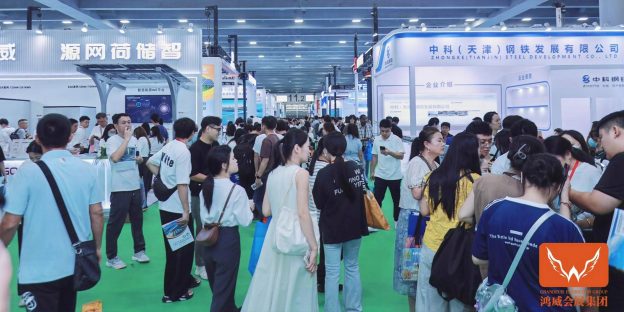Polysilicon:
Polysilicon prices continue to decline throughout the week. The mainstream concluded price for mono recharge polysilicon is RMB 65/KG, while mono dense polysilicon is priced at RMB 63/KG and N-type polysilicon is currently priced at RMB 68/KG.
Looking at the market transaction dynamics, orders took a hit this week, and collectively signing orders within a centralized period has ceased. Observing the price trends, major manufacturers are experiencing a decline in new orders, causing a further narrowing of the transaction prices for both N-type and P-type polysilicon. Looking at the supply side, the new production capacity of leading polysilicon manufacturers is set to come online this month, contributing to an uptick in output. Consequently, the polysilicon supply will continue to outpace demand, leading to a further increase in polysilicon inventory, which has now reached the range of 90,000 to 120,000 tons this week. Shifting focus to the downstream industrial chain, the wafer inventory has reverted to a reasonable level, and there’s a slight uptick in the activation rate of crystal pulling manufacturers. This has resulted in an increased demand for polysilicon. However, this heightened demand is insufficient to counterbalance the marginal increase in polysilicon supply. In summary, the price of polysilicon is on a downward trajectory, and with new production capacities slated to come online by year-end, the short-term supply-demand imbalance is unlikely to rectify. Compounding this, the absence of concrete demand from customers indicates an anticipated further dip in polysilicon prices. The inventory of N-type polysilicon is expanding, intensifying pressure on upstream raw materials. Consequently, the support for N-type polysilicon prices is diminishing, and the price gap between N-type and P-type polysilicon is expected to shrink.
Wafer:
The prices of wafer have maintained stable throughout the week. The mainstream concluded price for M10 P-type wafer is RMB 2.30/Pc, while G12 P-type wafer is priced at RMB 3.30/Pc and M10 N-type is priced at RMB2.40/Pc.
On the supply side, there are indications that specialized polysilicon manufacturers may ramp up their operating rates, primarily due to a reduction in wafer inventory. The current inventory of wafers has dwindled to the range of 1.4-1.6 billion pieces, bringing substantial relief to wafer manufacturers from inventory pressures. Switching to the demand side, the pressure on cell demand persists, with cell inventory remaining unconsumed. Consequently, some cell manufacturers are contemplating production cuts to mitigate potential future losses. This slowdown in demand from cell manufacturers is causing a sluggishness in the demand for wafers. Currently, both wafer and cell prices are hovering close to their production costs, empowering manufacturers on both fronts to engage in assertive bargaining. As a result, it is anticipated that price negotiations will reach a stalemate in the short term.
In summary, wafer prices have held steady this week, but it’s crucial to remain vigilant as wafer prices might face renewed pressure. This could be triggered by a decline in upstream raw material prices and the persistent lack of positive momentum in downstream demand.
Cell:
Cell prices have been different with the G12 cell price rebounding and other types remaining stable this week. The mainstream concluded price for M10 cell is RMB 0.46/W, while G12 cell is priced at RMB 0.56/W. The price of M10 mono TOPCon cell is RMB 0.49/W.
On the supply side, the overall cell inventory is proving challenging to deplete due to the persistently sluggish downstream demand. This situation is exerting increased pressure on cell inventory levels. Additionally, faced with the challenge of low cell prices, a portion of the high-cost P-type cell production capacity has been gradually scaled back. If prices continue to decline in the future, this segment of production capacity may eventually phase out. This underscores the evolving landscape of P-type and N-type cell technologies, prompting cell manufacturers to reassess how they manage the older production capacity of P-type cells. Shifting to the demand side, module inventory remains elevated, yet the overseas customer demand remains weak even during the peak season. In summary, cell prices have remained stable this week. With the support from the delivery of orders in this month, there is intense demand for 210mm P-type cells, leading to a rebound in their prices.
Module:
Module prices have gone down slightly throughout the week. The mainstream concluded price for 182mm facial mono PERC module is RMB 1.06/W, 210mm facial mono PERC module is priced at RMB 1.08/W, 182mm bifacial glass PERC module at RMB 1.07/W, and 210mm bifacial glass PERC module at RMB 1.09/W.
On the supply side, there’s a divergence in production schedules among module manufacturers. First-tier manufacturers are maintaining stable delivery schedules with sufficient orders, while second and third-tier manufacturers are compelled to scale back production to avert losses. Additionally, it’s crucial to monitor the impact of backhaul orders’ sale prices on domestic module prices. Turning to the demand side, overseas module inventory remains elevated, coupled with sluggish purchasing demand. The customer demand for modules is heading into the off-season. Furthermore, the demand for distributed PV installations is struggling to turn positive due to overall weak demand. Faced with weak downstream demand, module manufacturers are adopting a strategy of lowering prices to facilitate more shipments, driven by the imperative to clear inventory by year-end. In summary, module prices are anticipated to experience a slight decline this week.







